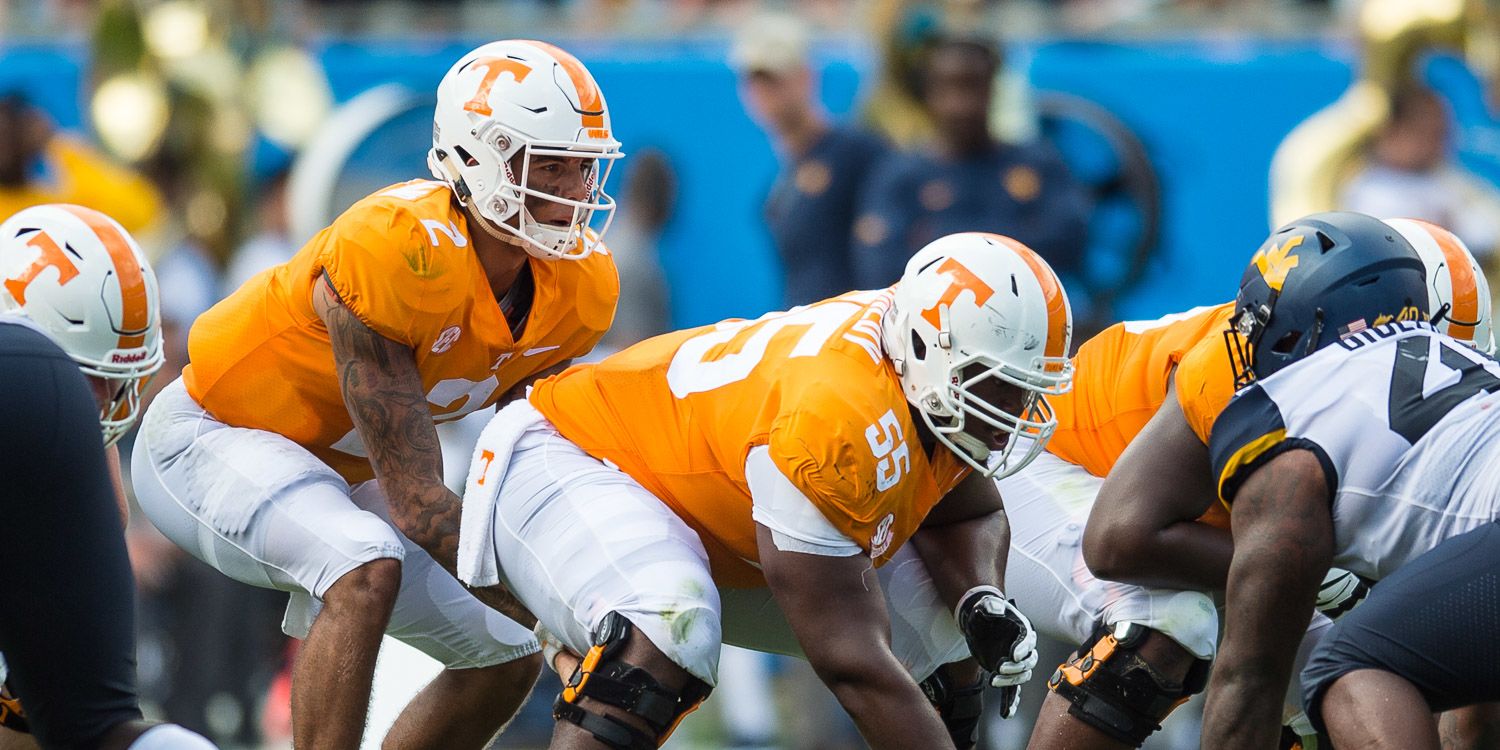We saved the worst for last. In our series on where Tennessee can make the most progress in 2019, we’ve explored:
- A defense with just 15 turnovers in each of the last two seasons
- The Vols running fewer plays than any team in the nation last year
- Opponents scoring points on 41 of 45 red zone trips
- A higher percentage of explosive plays than we thought in the passing game, but not in the running game
But if you’re looking for the thing Tennessee was absolutely, positively worst at last season, it’s third-and-short.
Last year Tennessee ran the ball 21 times on 3rd-&-1-to-3. They gained just 20 yards. Those 0.95 yards per carry on third-and-short weren’t just last in the country: Liberty finished 129th, and averaged 1.52 yards per carry. The Vols were the only team in America to average less than a yard-and-a-half per carry on third-and-short, and the Vols averaged less than a yard period.
(Stats, as always, via SportSource Analytics)
Those 21 carries led to 10 first downs, meaning the Vols converted just 47.6% of the time when running the ball on third-and-short. By comparison, here’s what Tennessee did in other situations last fall:
| Att | First Downs | Success Rate | |
| 3rd 1-3 Run | 21 | 10 | 47.62% |
| 3rd 1-3 Pass | 10 | 4 | 40.00% |
| 3rd 4-6 Run | 9 | 2 | 22.22% |
| 3rd 4-6 Pass | 28 | 15 | 53.57% |
| 3rd 7-9 Run | 7 | 3 | 42.86% |
| 3rd 7-9 Pass | 28 | 13 | 46.43% |
| 3rd 10+ Pass | 34 | 11 | 32.35% |
Statistically speaking, it was better for the Vols to be in 3rd-&-4-6 and pass than 3rd-&-1-3 and run. And Tennessee had more or less the same chance of getting a first down on a third-and-short run and a third-and-long pass.
The truth is, if you’re in third-and-short, you’ve done fairly well on first and second down. But Tennessee struggled mightily to convert from there. Here’s what the rest of the SEC did when running it on third-and-short:
| Att | Yards | Avg | 1st Downs | Success Rate | |
| Georgia | 36 | 188 | 5.22 | 26 | 72.22% |
| Missouri | 45 | 178 | 3.96 | 31 | 68.89% |
| Florida | 42 | 178 | 4.24 | 28 | 66.67% |
| Texas A&M | 32 | 140 | 4.38 | 21 | 65.63% |
| Kentucky | 46 | 156 | 3.39 | 30 | 65.22% |
| Alabama | 43 | 182 | 4.23 | 28 | 65.12% |
| Mississippi State | 52 | 281 | 5.40 | 32 | 61.54% |
| Auburn | 45 | 266 | 5.91 | 27 | 60.00% |
| LSU | 49 | 198 | 4.04 | 29 | 59.18% |
| Arkansas | 20 | 31 | 1.55 | 11 | 55.00% |
| Ole Miss | 34 | 93 | 2.74 | 17 | 50.00% |
| Vanderbilt | 24 | 113 | 4.71 | 12 | 50.00% |
| Tennessee | 21 | 20 | 0.95 | 10 | 47.62% |
| South Carolina | 21 | 51 | 2.43 | 8 | 38.10% |
Obviously, it would be hard to get much worse in this department. The good news is, because you’re already in a short yardage situation, a little improvement goes a long way toward keeping a drive alive. There may also be a stubbornness component here: I’d imagine Jeremy Pruitt/Tyson Helton had to see it several times to believe the Vols really couldn’t move the pile on third-and-short. Pruitt and Chaney are likely to believe it sooner if it happens again this fall.
